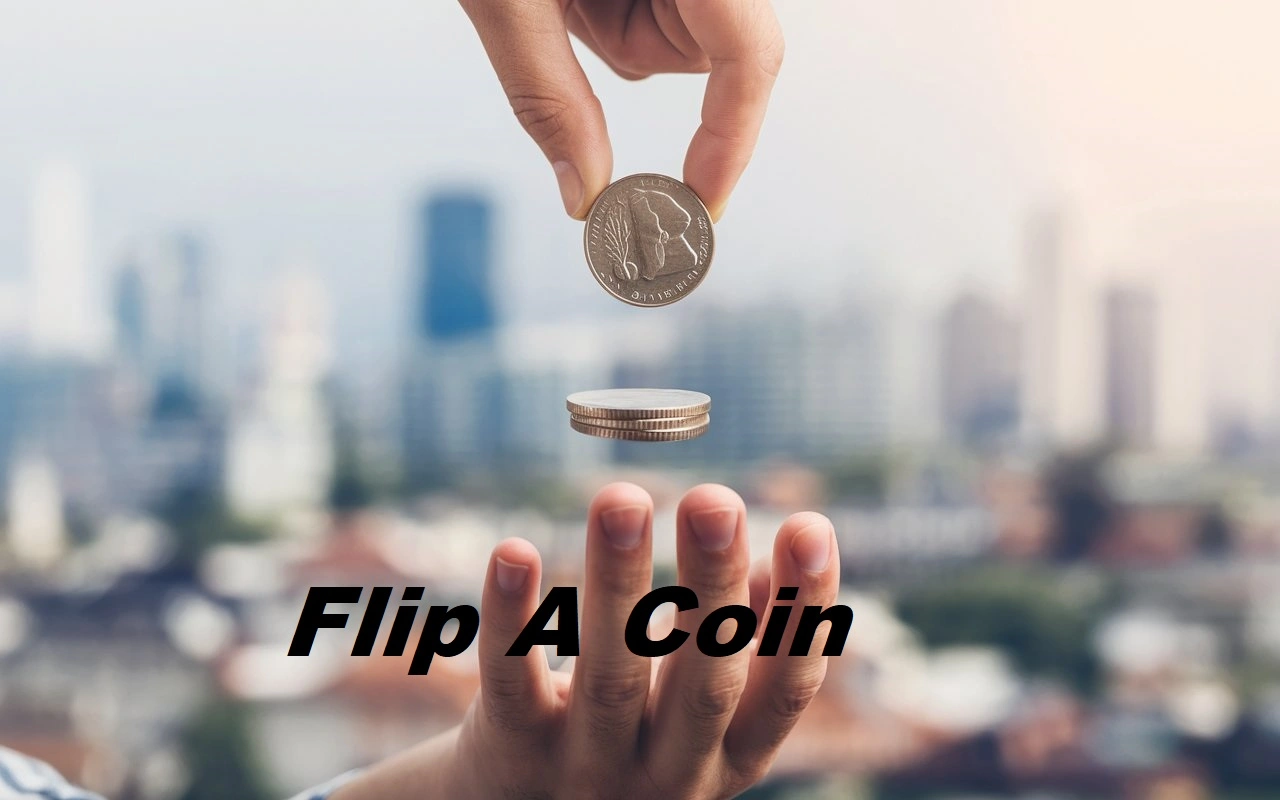Coin flipping, also known as “flip a coin,” is more than just a whimsical childhood game. It’s a fascinating blend of history, probability, and practicality that has endured through centuries. Whether you’re deciding who takes the first turn in a game or making a life-changing decision, a coin flip can feel like the ultimate tie-breaker.
In this article, we’ll dive deep into the origins, mechanics, psychological effects, and even modern digital alternatives of flipping a coin. Get ready to explore why this simple act continues to hold power in today’s fast-paced world.
What Is a Coin Flip?
A coin flip is a random event where a coin is tossed into the air, landing on one of two sides—heads or tails. While the act seems simple, its implications can be profound. When you “flip a coin,” you essentially place the outcome in the hands of chance, which is sometimes the fairest way to settle disputes or make decisions.
Interestingly, the concept of randomness tied to flipping a coin has led to its use in sports, politics, and even scientific experiments. But how did this unassuming act become so iconic?
The History of Coin Flipping
The origins of the coin flip can be traced back to ancient civilizations. The Greeks used a game called “navia aut caput” (ship or head), where one side of a coin displayed a ship and the other a head. Similarly, Roman soldiers used “Heads or Ships” to resolve disputes.
As time passed, the act of flipping a coin became synonymous with fairness. In the 19th century, it was even used in critical moments, such as the naming of cities. For example, the naming of Portland, Oregon, was decided by a coin toss between two founders who each wanted to name the city after their hometown.
How Does a Coin Flip Work?
A coin flip might seem random, but physics tells us a different story. The result depends on several factors, including:
- Initial Velocity: How fast the coin is tossed.
- Rotation: The number of spins in the air.
- Height: The distance it travels before landing.
- Surface: The material it lands on, which may influence bounces.
Although these variables make predicting the outcome nearly impossible for humans, mathematicians and physicists have found ways to analyze coin flips using advanced algorithms.
The Role of Coin Flipping in Probability
Flipping a coin is a perfect example of a binary outcome in probability. Each flip has two possible results—heads or tails—giving each side a 50% chance. However, real-world experiments reveal slight biases due to imperfections in coins or uneven tossing methods.
Studies show that coins with one side heavier than the other may land on the heavier side more often. Similarly, how you flip the coin (e.g., force, spin) can subtly influence the result.
Psychological Impact of “Flip a Coin” Decisions
Why do we flip coins when faced with tough choices? Interestingly, the act itself provides clarity. Here’s how:
- Simplifies Complex Decisions: Narrowing down options to just two makes decision-making less overwhelming.
- Reduces Regret: By leaving the outcome to chance, individuals often feel less responsible for the result.
- Reveals True Desires: Sometimes, when the coin is in the air, we find ourselves secretly hoping for a specific result, uncovering our genuine preferences.
Coin Flip in Popular Culture
The concept of flipping a coin has made its way into various aspects of culture, such as:
- Movies: Characters often use a coin flip to make life-altering decisions (e.g., “No Country for Old Men”).
- Sports: Many sports rely on a coin toss to determine who goes first, such as in football or cricket.
- Video Games: Some games use digital coin flips as a fun randomizer.
These examples highlight how embedded this simple act is in both everyday life and entertainment.
Digital Coin Flip: A Modern Twist
In today’s digital era, you don’t need a physical coin to enjoy the benefits of flipping. Online coin flip simulators, apps, and even virtual assistants like Siri or Google Assistant can flip a coin for you with a voice command.
- Advantages of Digital Coin Flipping:
- Instant and convenient.
- Accessible from anywhere.
- Ensures fairness with no physical biases.
This evolution has made coin flipping more versatile than ever, catering to a global audience.
Coin Flip in Decision-Making
When should you flip a coin? Surprisingly, it’s not just for minor decisions. Researchers have found that using a coin flip can help in:
- Breaking Stalemates: When two parties can’t agree, flipping a coin avoids lengthy debates.
- Quick Decisions: For time-sensitive matters, it eliminates analysis paralysis.
- Stress Reduction: Knowing the outcome is fair can reduce tension.
The Fun Side of Coin Flipping
Aside from practical uses, flipping a coin has become a playful activity. Here are some fun ways people use it:
- Games: Deciding who goes first in board games.
- Challenges: “Heads, we go out for dinner. Tails, we stay in.”
- Trivia: Testing friends’ luck and reactions.
The Coin Flip in Science and Philosophy
In scientific experiments, coin flips are often used to randomize variables, ensuring unbiased results. Philosophers, on the other hand, explore its deeper implications. Is the universe truly random, or are outcomes predetermined? Such questions make the coin flip a topic of endless debate.
Making Your Own Coin Flip Game
Creating a coin flip game is as simple as grabbing a coin and setting some rules. For instance:
- Choose a scenario (e.g., what to eat, where to go).
- Assign heads and tails to each option.
- Flip and let the coin decide.
This lighthearted activity can turn mundane decisions into entertaining moments.
The Science of a “Fair Flip”

For those who want to ensure absolute fairness, scientists recommend the following:
- Use a symmetrical coin with no visible defects.
- Flip the coin multiple times to reduce bias.
- Toss it with a consistent force.
Following these steps minimizes any unintended influence on the outcome.
Pros and Cons of Coin Flipping
The act of flipping a coin is deceptively simple yet has its share of advantages and disadvantages. While it’s often celebrated for its fairness and ease, it also comes with limitations. Let’s explore the pros and cons of this timeless decision-making tool.
Pros of Coin Flipping
- Simplicity
A coin flip requires nothing more than a coin or even a virtual coin-flipping tool. It’s an easy, no-fuss solution for resolving indecision. - Fairness
With equal chances of landing heads or tails, flipping a coin eliminates personal bias, making it a widely trusted method of random selection. - Quick Resolution
Whether you’re breaking a tie or making a quick choice, a coin toss provides an immediate answer, saving time in the decision-making process. - Universal Understanding
Coin flipping is recognized worldwide as a fair way to settle disputes or choose between options, transcending language and cultural barriers. - Reveals Hidden Preferences
Often, when the coin is in the air, you may realize you’re secretly rooting for one outcome. This helps uncover your true desires. - Versatility
Coin flipping can be used for anything—from trivial decisions (like what to eat) to serious ones (like who goes first in a game). It’s adaptable to nearly any situation. - Stress Reduction
Handing over the decision to chance can alleviate stress and remove the burden of overthinking or guilt for the final outcome.
Cons of Coin Flipping
- Lack of Control
The randomness of a coin flip removes all control over the decision, which can be frustrating when the stakes are high. - Not Always Fair
Factors like uneven coins, flipping techniques, or surface irregularities can introduce bias, making the outcome slightly skewed. - Limited to Binary Choices
A coin flip is only effective when there are two clear options. It cannot handle more complex decisions with multiple variables. - Emotional Dissatisfaction
Sometimes, leaving a decision to chance can feel unsatisfying, especially if the stakes are personal or significant. - Over-Reliance on Randomness
Using coin flips for critical decisions might lead to regrettable outcomes since the method doesn’t consider logic, context, or long-term consequences. - Psychological Bias
People may unconsciously flip the coin in a way that favors their desired outcome, undermining the fairness of the process. - Outcome Ambiguity
Occasionally, the result might be unclear—such as when a coin lands on its edge or is misinterpreted during a heated moment.
FAQs
What are the odds of a coin landing on its edge?
The odds are extremely low—around 1 in 6,000—due to the coin’s shape and weight distribution.
Can flipping a coin truly be random?
While the act seems random, external factors like force and angle introduce slight biases.
Why do people trust a coin flip?
A coin flip is perceived as fair since it removes human bias, relying entirely on chance.
Are digital coin flips as fair as physical ones?
Yes, digital coin flips use algorithms to ensure unbiased results, often more consistent than physical flips.
What is the longest streak of heads or tails in a coin flip?
Statistically, long streaks are rare but possible in a series of flips due to probability theory.
Can you predict the outcome of a coin flip?
Experts have demonstrated that with enough data (e.g., spin rate, velocity), predictions are possible, though highly complex.
Conclusion
The coin flip is much more than a random act; it’s a cultural, historical, and psychological phenomenon that continues to captivate us. Whether you’re flipping a coin to make decisions, adding suspense to a game, or simply marveling at its timeless charm, this humble tool serves as a reminder that sometimes, the simplest things carry the most significance.
